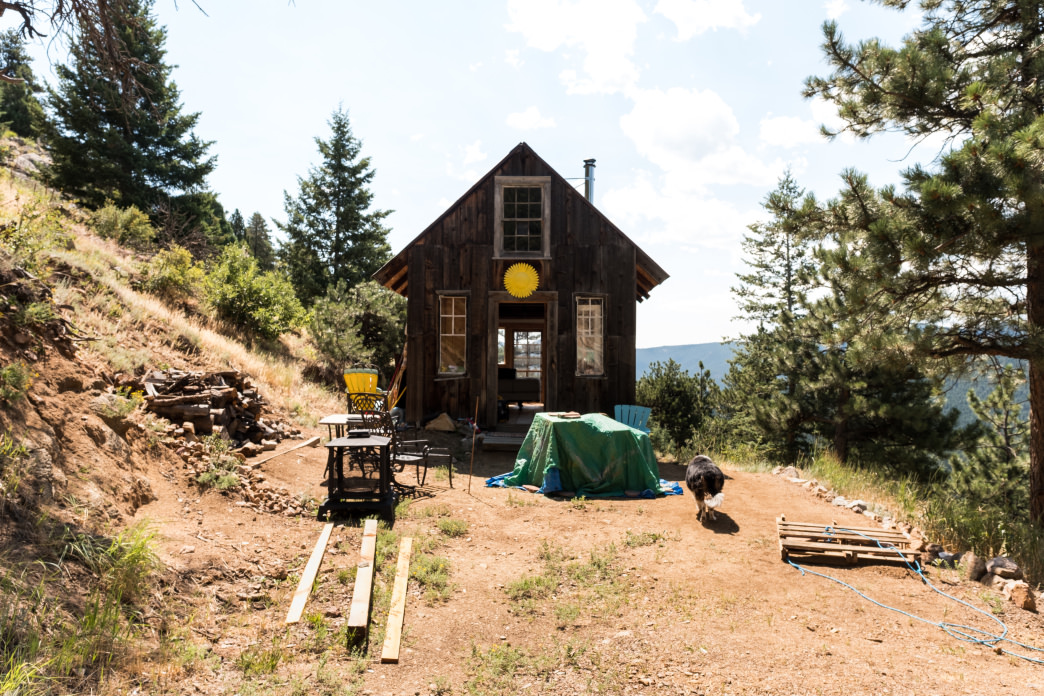
“Well, it’s got good bones.”
When my wife and I went all in on a five-acre plot of land in the foothills west of Boulder, Colorado, the sturdy but weathered 625-square-foot cabin on the property was a big incentive. Eventually we’d like to build a small, modern home on the land, but until then, our humble cabin will have to do. In the year since, we’ve learned a great deal about what it means to actually live in a cabin. (Full disclosure, we split our time between it and a rental property).
The bones of the cabin are indeed solid—the foundation, walls, roof, and cedar plank skin of the building are all made from good materials. The original cabin was likely built in the early 1900s. But a previous owner rebuilt key load-bearing parts of the structure in the 2000. Beyond the bones, however, the cabin needed a lot of work to get it into liveable shape.
Here are 10 things we’ve learned along the way.
1. Hard Work is Never a Bad Investment

While our cabin wasn’t in terrible shape, we didn’t want to fall victim to the mentality of “it’s just a cabin.” There was a lot to be done: A flush toilet needed to be repaired (we have a septic but no running water), water damaged and partially done drywall needed to be addressed, the hardwood floors suffered from neglect, windows needed to be replaced, and countless other chores, like caulking and oiling hinges, were in order.
This work could have been contracted out, but we opted to learn how to do the lion’s share of our repairs and upgrades ourselves. Ten months later, we have smooth white walls, a toilet hooked up to a rain barrel system, beautiful white oak floors, no leaks in the seams, a new front door, and two new windows. We are lucky to have an excellent reclaimed building materials store in Boulder, ReSource, which has saved us a lot of money. Our cabin has been transformed from looking haunted to downright cozy.
2. Fire Mitigation is Serious Business

In our first year, we got a taste of just how dangerous wildfires can be. The Cold Springs Fire burned over 500 acres and destroyed eight homes. The evacuation boundary was within a half mile of our cabin, which thankfully remained unaffected. Fire mitigation is something that simply cannot be put off and must be maintained. The Fire Smart Home Handbook by Clyde Soles is an excellent resource for those wanting to make their cabins and homes as safe as possible. Some tips are obvious: Keep trees trimmed and a safe distance from the cabin, install a metal roof, and surround the cabin with a fire break at the base (usually stone). Others, like keeping pine needles from building up at the base of trees and burying large propane tanks, didn’t come to mind automatically but make sense.
3. Bug and Critter Proofing Can Make a World of Difference
Nothing ruins a good night’s sleep like the shrill buzz of a mosquito or the phasing hum of swooping black flies. Finding all the little cracks that bugs might infiltrate does take work, but caulking windows and doors was a good start. Insulating foam sealant was used in many of the gaps in the hide of the cabin and rope was wedged in the spaced between floor boards. While finishing the drywall, we looked behind the insulation in the walls to check for less obvious holes. Along with finishing the drywall, these actions helped to keep our insect traffic to a minimum.
4. Invest in the Best Tools You Can Afford
Many basic homeowner tools just can’t hold up to the workloads required of cabin living. Chainsaws, weedwhackers, trimmers, and their respective protective gear (facemask, noise-blocking headphones, safety goggles) must be ready to put in overtime for the vigilant cabin owner. A reliable generator is a wise investment, especially if you plan to run power tools. Even seemingly minor details, like the hosing used for our rain barrel system, must be built to last. Likewise, fiberglass handled axes, rakes, and mattocks all are worth their extra cost. A solid, well-made multi-tool like the Gerber Diesel is perfect for all the unexpected situations that inevitably pop up when living in a cabin.
5. Solar Power Has Come a Long Way
Motion-detecting outdoor solar lights, solar power systems, indoor lighting, and even solar powered speakers all have a place in your wilderness cabin. Nokero makes excellent solar-powered lights starting as low as $19.99—and their company donates generously to other countries by providing solar lights to replace kerosene (thus the name “Nokero”). Solar powered systems can range from small panels (around $100) to power a few lights to effective home-powering setups, starting around $1,000.
For speakers, I’ve been impressed with Mojo Products Mojo Box, a bluetooth and line-in solar speaker with excellent sound quality that has spent the summer in our cabin, never coming close to running out of juice. (It’s also nice to have when doing outdoor work by myself to let the wildlife know I’m there.)
6. Do Not Neglect Your Wood Stove

The first thing we did after signing the deed to our cabin was get a quality chimney sweep to check out our wood burning stove. Wood stoves can go years without cleaning, and it’s not uncommon for birds to build nests in chimney openings and cause fires in the autumn months. Luckily, ours was well maintained and didn’t need much work, but we still make a point to have it serviced twice a year. Most modern stoves have a lot of safety built in. But much like the need to change the oil in your car, stoves can’t be neglected.
7. Wildlife is Opportunistic
While walking my dogs on our land, they became particularly interested in a mound of dirt. That’s because, of course, it wasn’t a mound of dirt at all but rather a deer corpse cached by a mountain lion! Being vigilant of the “big guys”—mountain lions, black bear, coyotes, and bobcats—is important, but what many cabin owners forget is the big guys are drawn in by the little guys. Simple things like picking up dog waste, not leaving food outside, cleaning and storing grills, and making sure your vehicles aren’t leaking fluids, all help keep your land less interesting to critters. Inside the cabin, cleanliness is a virtue that will keep rodents and insects from taking a second look. Wildlife cameras with motion sensors (many under $100) can give you an idea of who is visiting your cabin when you aren’t around.
8. Maximize Your Space
A cluttered cabin is not only uncomfortable, it can diminish the reason many people have cabins—to relax and stretch out. Our cabin has two lofts, one we’ve furnished as a guest room and the other we use for storage. The main floor includes a compact kitchen area, small but cozy recliners and a comfortable fold-out couch. Even in more spacious cabins, storage tips from the world of tiny homes can be utilized to open up floor space for important things like dog beds and cots.
9. Progress Comes in Stages
For most cabin owners, the prospect of transforming a cabin starts out with a lot of motivation that wanes as weeks turn into months, and free time disappears. It helps to set realistic expectations. For example, we needed ventilation to get rid of bugs, so finishing the drywall was our top priority. We’d like to replace many of the outer boards, build a deck, and complete our vision for our lofts, but those projects will have to come later. Each season has its own high priorities: Fire mitigation, wood stove maintenance, and general pest control are year-round endeavors. Take care of safety concerns first and foremost, then focus on creating comfort.


10. Don’t Forget Why You Have a Cabin
One last tip for the ambitious cabin owner: Make sure to actually enjoy time in your special place. This summer, I realized I had gone a solid two months of working without having a night where I just brought my guitar, the dogs, a few adult beverages, and a good book and just relaxed. For most of us, a cabin is a retreat from the busy, hectic world, a place to unwind and decompress.
Your cabin may not be perfect. That crack in the window may still be there or the stairs may creak, but don’t let that prevent you from taking advantage of what your cabin does offer.
Originally written by RootsRated for Gerber Gear. Featured image provided by Mark McKnight





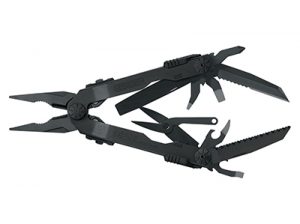
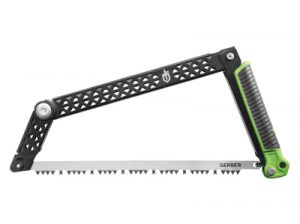
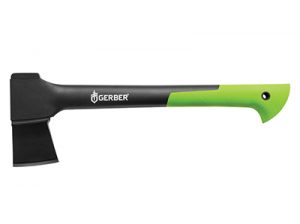
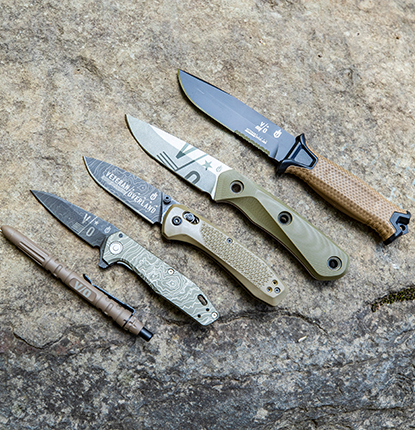
Heck yeah!!! I been in a 720 sq ft cabin since 1998 in the high desert of Joshua Tree Ca. Learned to fix and do things I never imagined possible…. Bottom line….. You feel alive every day you are on yer own property! Amen.
I live in an RV. It’s awesome! And mobile. And new.